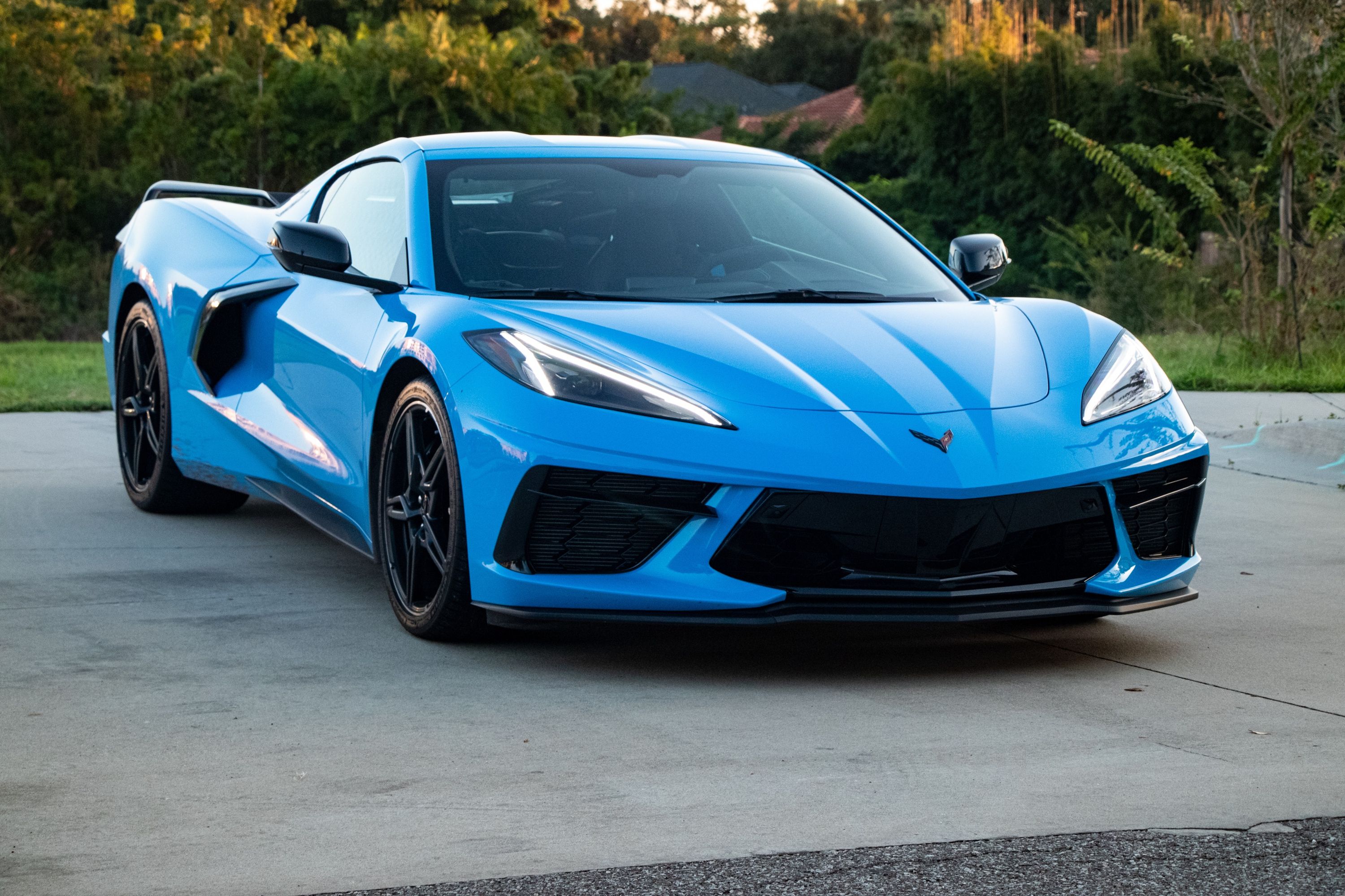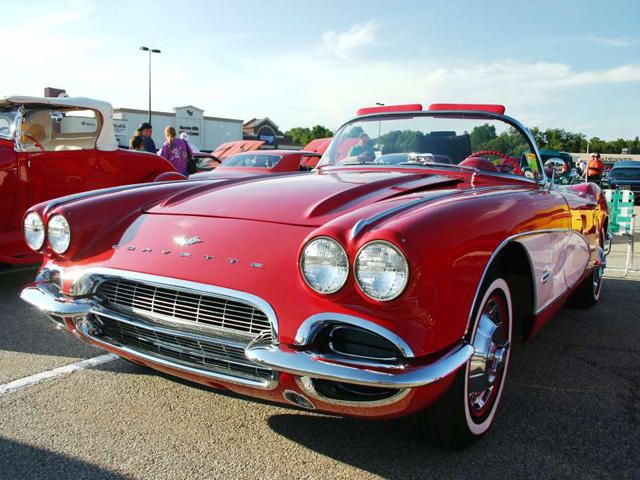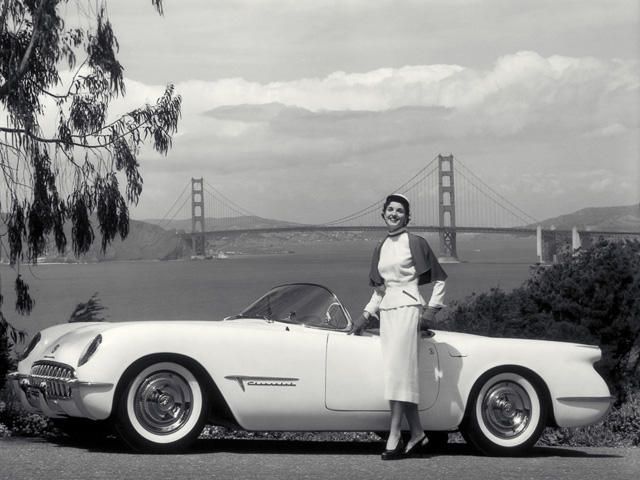
On June 30, 1953 the first Chevrolet Corvette generation (C1) rolled off the assembly line at a temporary production facility in Flint, Michigan. It was a convertible (a C1 coupe was never made) equipped with the Blue Flame six-cylinder inline engine with 150hp and Powerglide, GM's 2-speed automatic transmission. Only 300 units, all of them in the same colors - Polo White exterior, Sportsman Red interior - were produced before production was transferred to a facility in St. Louis, Missouri at the end of that year.
Sharp-eyed observers would discover a few similarities in design details between the Corvette C1 and the Mercedes-Benz SL 190. These included the proportions between the long hood and the short rear deck, the rounded headlights encircled with chrome rings, the rectangular prominent chromed front grille, the position of the hood, and the bulbous front wheel arches. This shouldn't have come as much of a surprise since both models aspired to cater to the same clientele in the same car segment. However, the taillights at the end of the small fins are a reminder to the design trends of that era.
The convertible top was simple, light and easy to fold. Only two bows supported it and a sophisticated lifting rear bow enabled its storage in a compartment behind the two seats and under the rear deck. For the first three years the Corvette was short of essentials such as exterior door handles, and the smooth looking door was the better for it. In 1954 the Corvette soon made its debut on the international motorsport scene. American racing driver Bill von Esser and his co-driver Ernest Pultz started the Carrera Panamericana road race that ran the length of Mexico from south to north.
However, the two didn't cover much of the course, since a con rod in their Blue Flame engine found its way out of the block on the first day of the race, bringing the Corvette's racing debut to a premature end. After two years of slow sales it became clear that the Corvette had a problem, a big one, and it was in the engine department. The Blue Flame engine wasn't powerful enough for the Corvette to lay a claim to the aura of a true sports car and to increase sales. Then in 1955 Zora Arkus-Duntov, who was selected to lead the team that developed the Corvette, implanted the new small-block V8 with 195hp under the hood.
Interestingly, rumors had it that the idea emanated from Chevrolet chief engineer and three time Indy 500 Winner Mauri Rose. A 3-speed manual gearbox was then mated to the new V8 engine. For 1956, the C1 had a massive facelift: concavity on the car's side that started behind the front wheels and ended with a sharp corner at the middle of the door. In addition, the sculpted-futuristic taillights were erased and new ones were incorporated into the sloping rear fenders and roll-up windows replaced the curtains that were used to separate the car's interior from the exterior.
Proper door handles were also installed, which brought to an end the practice of opening the door from the inside. More improvements were made to the convertible roof that became available in a hydraulic operated arrangement. And in 1958, double headlights on each side debuted. In the years to come the C1 received a few small scale design changes. More powerful engines were offered, like the 283 CID that was installed in 1957. It was the first American engine in a road going car to be equipped with a mechanical fuel injection system and a bigger 327 CID was added for the C1's last model year in 1962.
In a 10 year production run, almost 70,000 Corvettes were sold at prices ranging from $3,500 to $4,000. Most if not all those C1s are today now worth tens of thousands of dollars. A few weeks ago at an RM auction in Arizona, the C1 No. 5 was sold for $445,000 (and missed the lower sum of the valuation of $450,000). It is not the most expensive Corvette ever sold, but it is a fine testament to the value of the Corvette C1 from 1953 when only 300 were produced. Of those, about 250 are known to survive almost 60 years after they were given the green light to go on the road.


